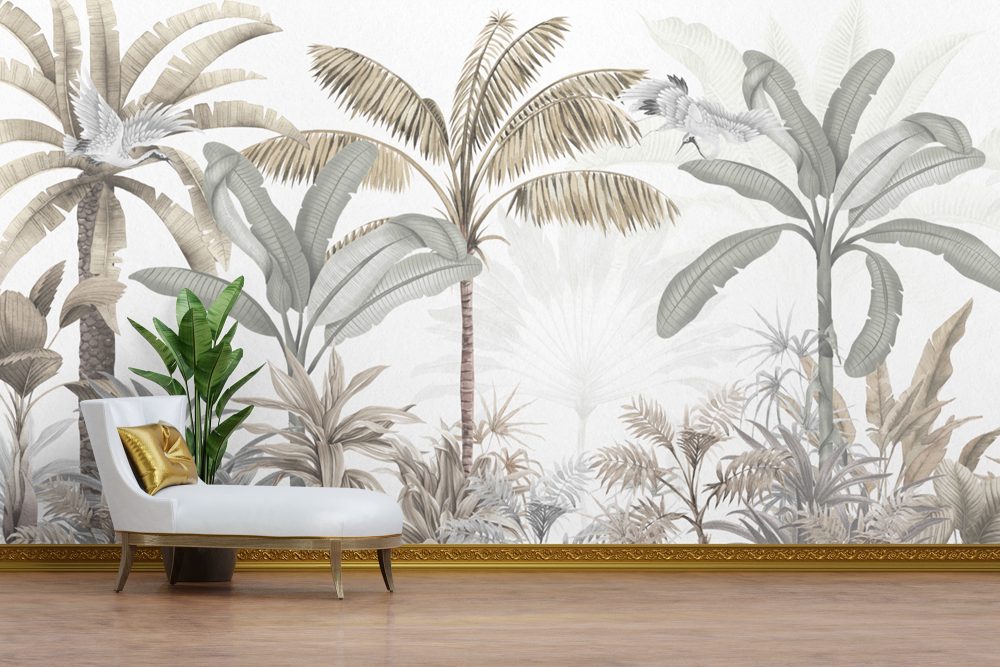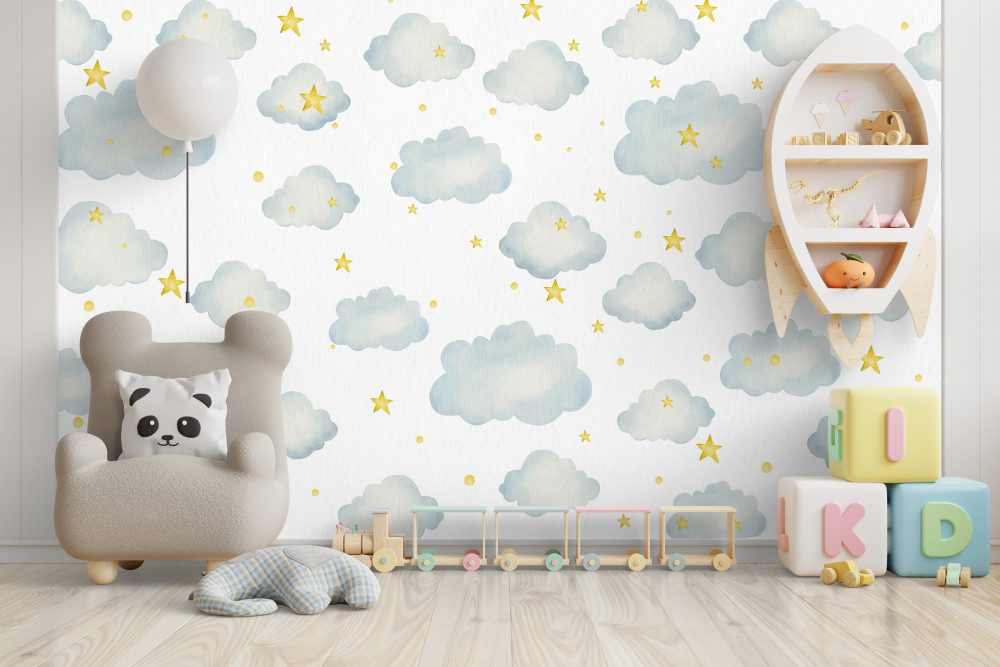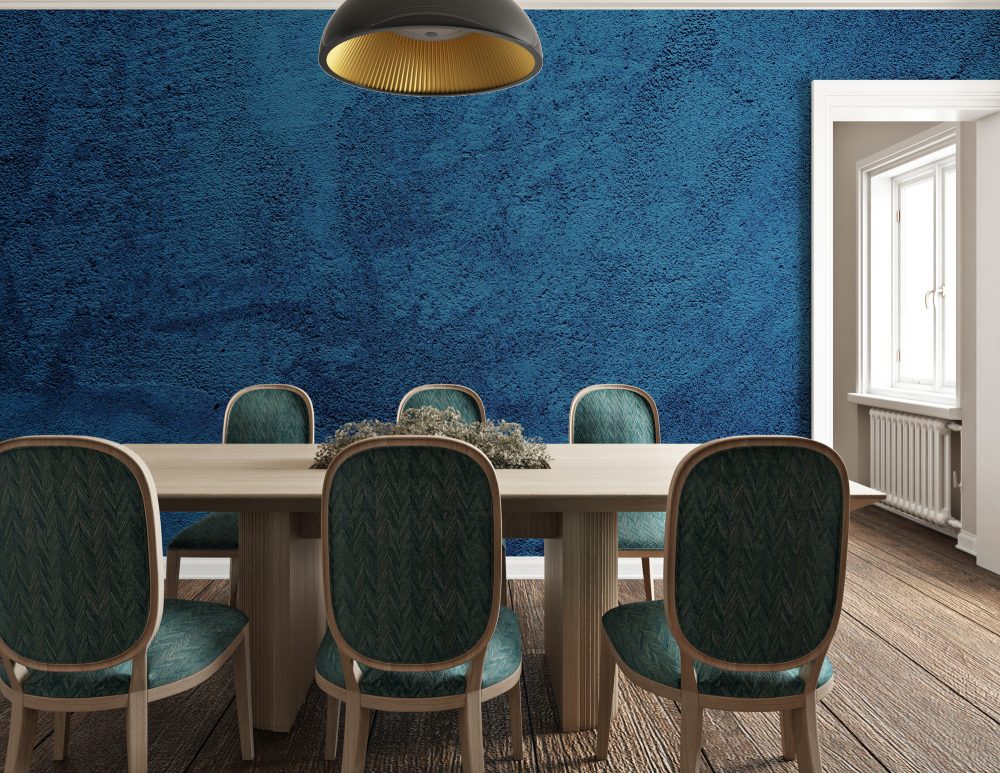Wall murals and wallpaper are both popular ways of adding a decorative touch to any space, but they’re not the same. While they may look similar, there are important differences between wall murals and wallpaper that you should consider before making your choice. In this blog post, we’ll discuss the differences between the two and how to decide which one is right for you. Whether you’re looking for something subtle or bold, these tips will help you choose the best option to transform any room in your home.
Wallpaper vs. Wall Murals
When it comes to deciding between wallpaper and wall murals, it really depends on what look you are going for in your space. Wallpaper can be a great way to add some pattern or texture to your walls, while wall murals can make a big impact in a room with their larger scale and more intricate designs. Here are some things to consider when choosing between wallpaper and wall murals:
-Wallpaper is typically less expensive than wall murals.
-Wallpaper can be hung relatively easily, while wall murals may require some professional installation.
-Wallpaper comes in a wide variety of colors, patterns and textures, while wall murals tend to have more specific designs.
-Wallpapers can be used in smaller spaces or areas, while wall murals are better suited for larger blank walls.
Cost
There are a few key differences between wall murals and wallpaper that you should know before making a decision for your home. For starters, wall murals are much larger in size and coverage than wallpaper. They are also printed on thicker, more durable materials meant to withstand the elements. This is ideal if you live in an area with high humidity or temperature changes. Murals are also easier to remove than wallpaper, which can be a godsend come redecorating time. However, all this comes at a cost—literally. Wall murals tend to be more expensive than wallpaper, so it’s important to factor that into your budget before making a purchase.

Installation
Installing a wall mural is a bit more involved than simply hanging wallpaper. First, you’ll need to determine the placement of the mural and mark the area on the wall. Next, you’ll need to prepare the surface by cleaning it and making sure it’s smooth. Once the surface is ready, you’ll need to apply adhesive to the back of the mural and then position it on the wall. Finally, you’ll need to smooth out any bubbles or wrinkles and allow the adhesive to dry.
Wallpaper is much simpler to install. First, you’ll need to determine the placement of the wallpaper and mark the area on the wall. Next, you’ll need to cut the wallpaper to size and apply adhesive to the back. Once the adhesive is applied, you can simply position the wallpaper on the wall and smooth it out. There’s no need to worry about drying time as most adhesives will set quickly.
Removal
When it comes time to remove your wall mural or wallpaper, there are a few things to consider. Murals are generally easier to remove than wallpaper, but both can be done with the right preparation and tools.
If you’re removing a mural, start by gently peeling back a corner or edge of the design. If the mural is vinyl, you may be able to simply peel it away from the wall. If it’s made of paper or fabric, you’ll need to use a putty knife or other sharp object to score the surface before peeling it away.
Wallpaper removal is usually a bit more difficult, as wallpaper is usually glued directly to the wall. You’ll need to use a scoring tool to break through the surface of the wallpaper, then apply a generous amount of hot water or steamer to loosen the glue before peeling it away.

Maintenance
There are a few key differences between wall murals and wallpaper that you should be aware of before making a decision for your home. Wallpaper is generally much thinner than a mural, meaning it will show any imperfections in your walls more easily. Murals are also typically made of more durable materials, so they can withstand higher traffic areas or kids’ rooms. Finally, murals usually require professional installation, while wallpaper can often be installed by the homeowner.
Wall Murals
Wall murals are large, often decorative paintings that are applied directly to walls. Wallpaper is a printed design that is pasted to walls in sheets. Both wall murals and wallpaper can be used to add color and pattern to a room, but there are some key differences between the two.
Wall murals are usually much larger than wallpaper and can cover an entire wall or even multiple walls. They are typically applied by a professional painter, though some DIY-ers may attempt to tackle a mural project themselves. Wallpaper is much easier to apply and can be done so by anyone with moderate DIY skills.
Another big difference between wall murals and wallpaper is that murals are not always intended to be permanent. Many people choose mural paintings for their temporary nature, as they can be easily painted over when you’re ready for a change. Wallpaper, on the other hand, is generally more of a permanent commitment (though it can be removed if you’re really set on making a change).
So, which is right for your home? If you want something big and bold that makes a statement, go with a wall mural. If you’re looking for something more subdued or easy to change out down the road, wallpaper might be the better option.
Wallpaper
Wallpaper is a quick and easy way to add personality and style to any room in your home. Wall murals are a more permanent option that can be customized to your specific taste. Both options offer a wide range of designs, colors, and styles to choose from. Here are a few things to keep in mind when deciding between wall murals and wallpaper:
-Wallpaper is typically easier to install and remove than wall murals.
-Wallpaper comes in a variety of textures and finishes, including matte, glossy, and even foil-stamped options.
-Wall murals can be made from both traditional paper materials as well as vinyl or other durable substrates.
-Most wallpapers are sold in rolls, while wall murals usually come as individual panels.
-Wallpaper patterns can be repeating or random, while wall mural designs are usually one cohesive image.
Which one is better?
When it comes to wall coverings, there are two main options: murals and wallpaper. Both have their own unique benefits that can make them the right choice for your home, depending on your needs. Here’s a closer look at the key differences between wall murals and wallpaper:
Wallpaper is made of paper that is printed with a design or pattern. It is then glued to the wall using an adhesive. Wallpaper comes in a wide variety of colors, patterns, and styles, so you can find something to suit any taste. It is also relatively easy to install yourself.
Murals are large-scale paintings or photographs that are applied directly to the wall. They are usually custom-made to fit your space, so you can get exactly the look you want. Murals can be more expensive than wallpaper, but they are also more impactful and can really transform a room.
How to install a wall mural
Wall murals are a great way to add a personal touch to your home décor. They are relatively easy to install, and there are a variety of options available to suit any taste. Here is a step-by-step guide to installing a wall mural:
1. Choose the perfect spot for your mural. It should be an area that is visible from most angles in the room, so that you can enjoy it every day.
2. Decide on the size and shape of your mural. There are many pre-made murals available, or you could opt for a custom design.
3. Once you have your mural, unroll it and position it where you want it on the wall. Use painter’s tape or other adhesive to secure it in place temporarily.
4. With a pencil or other sharp object, trace around the edges of the mural onto the wall. This will be your guide for cutting out the section of wall where the mural will go.
5. Carefully cut out the section of wall using a utility knife or saw. Be sure not to damage any surrounding areas.
6. Peel back the backing paper from the mural and apply it to the exposed wall surface, smoothing out any bubbles as you go along.
How to install wallpaper
Installing wallpaper is a relatively simple process, but there are a few things you need to know before getting started. Here are the basics of how to install wallpaper:
1. Choose the right type of wallpaper. There are two main types of wallpaper: vinyl and fabric. Vinyl is the more popular choice because it’s durable and easy to clean. Fabric wallpaper is more expensive and can be damaged by moisture, so it’s not ideal for bathrooms or kitchens.
2. Measure your walls. You’ll need to know the dimensions of your walls before you buy wallpaper. Most rolls of wallpaper come in standard widths, so you’ll just need to measure the height of your walls.
3. Calculate the number of rolls you’ll need. Once you know the dimensions of your walls, divide that number by the width of a roll of wallpaper (usually around 20 inches). This will tell you how many rolls you’ll need to purchase.
4. Choose a pattern and design. Wallpaper comes in all sorts of colors, patterns, and designs, so take some time to browse through different options until you find something you love.
5. Hang the paper using paste or adhesive strips. Adhesive strips are usually easier to use, but paste can give a better hold (just be sure to follow the manufacturer’s instructions). Start at the top corner of your wall and work your way down, smoothing out any bubbles as you go along.
Conclusion
Wall murals and wallpaper are great ways to liven up a room, but they each offer their own unique benefits. Wallpaper is more affordable and easier to install, while wall murals can be customized with your favorite artwork or photos for a more personalized touch. Whichever you choose, both will help make your home look amazing. With just these few tips in mind, you’re sure to find the perfect solution for giving any room in your house an extra bit of flair!

